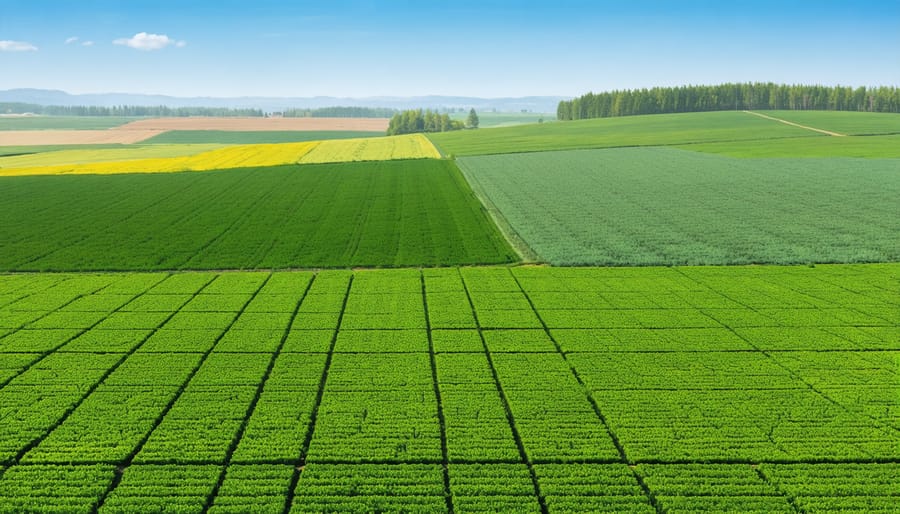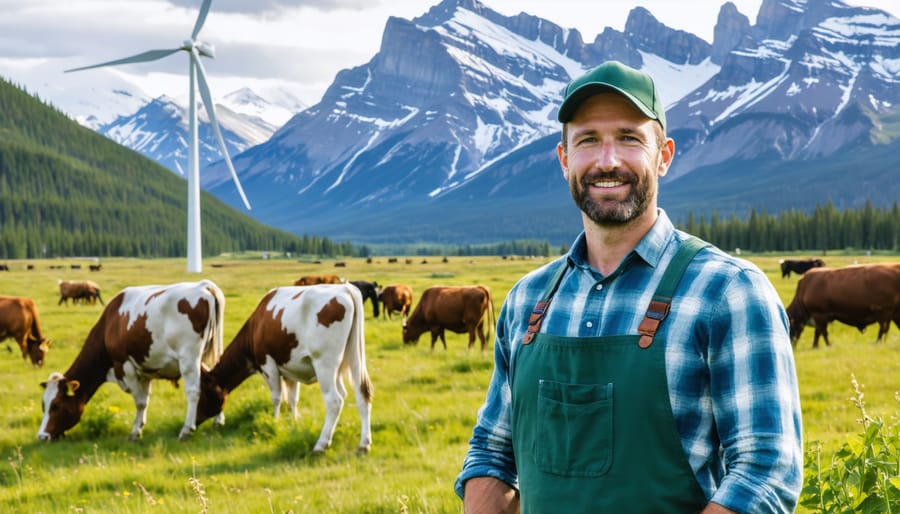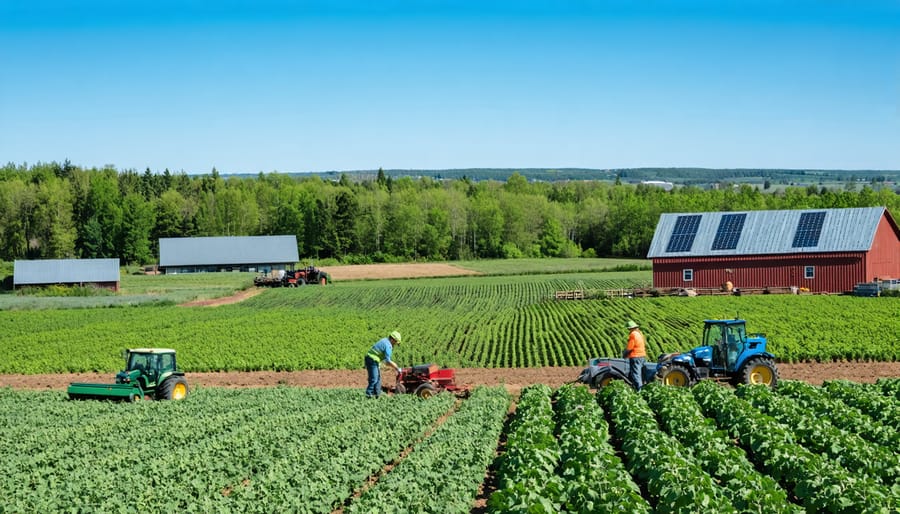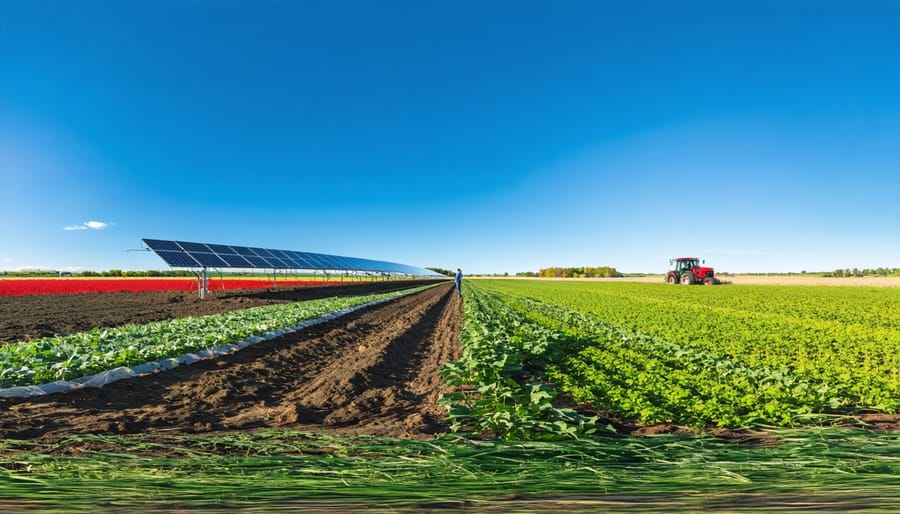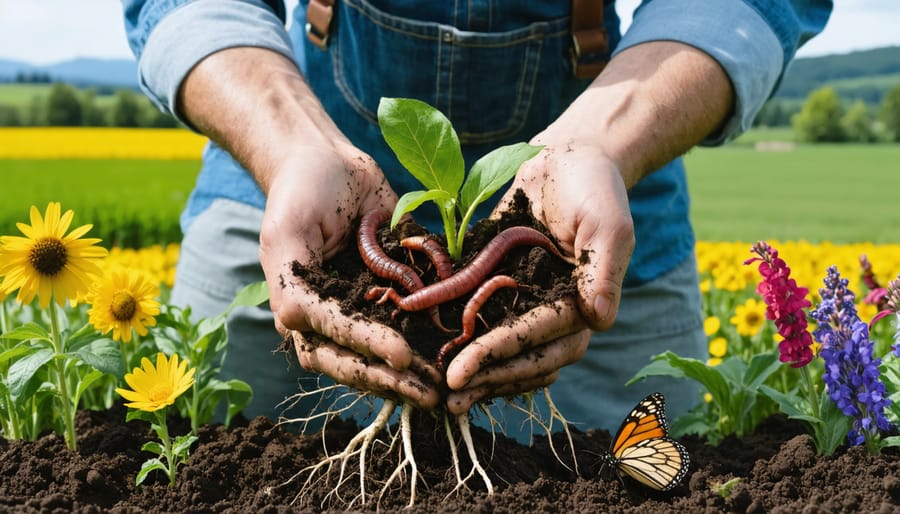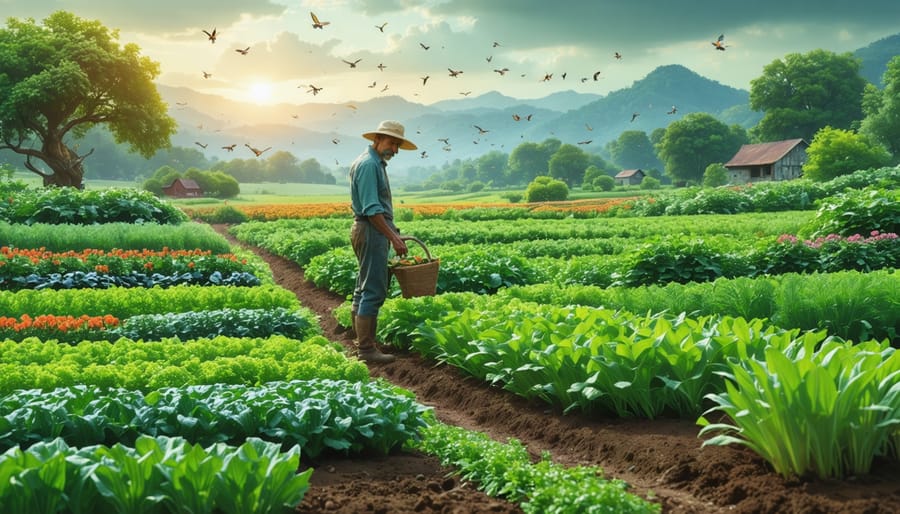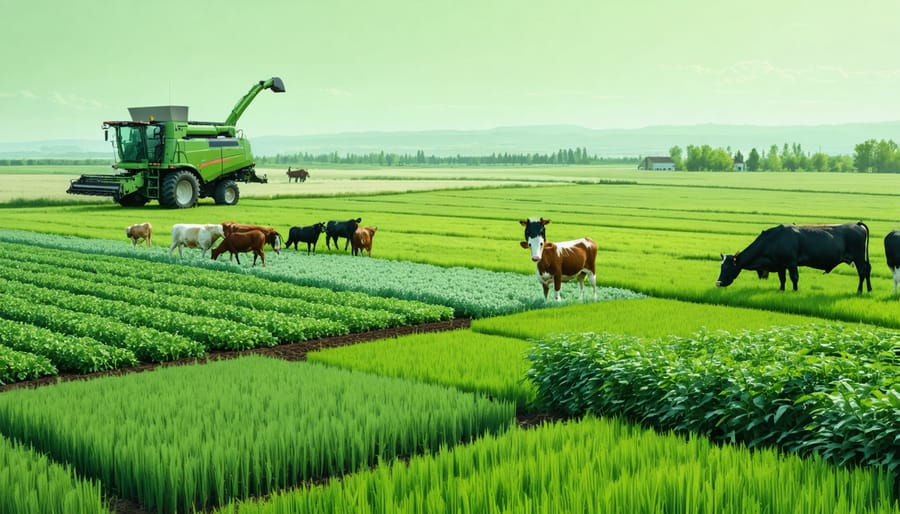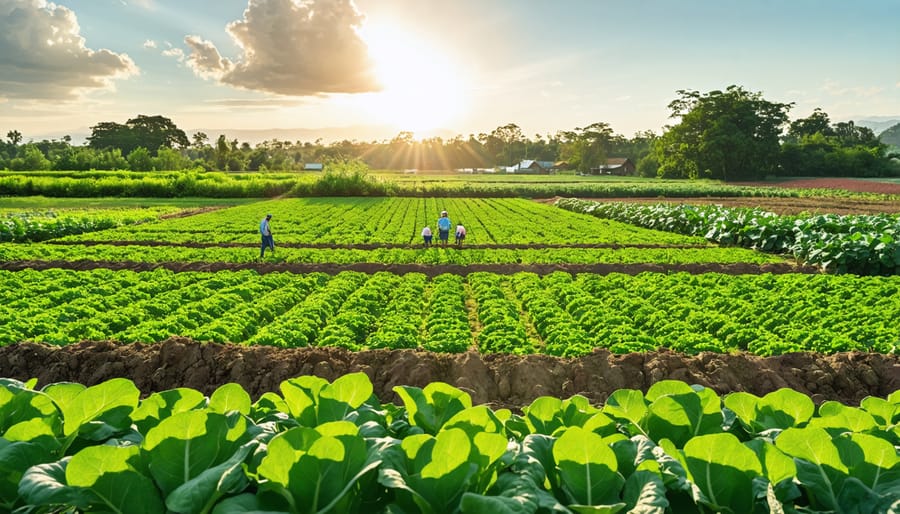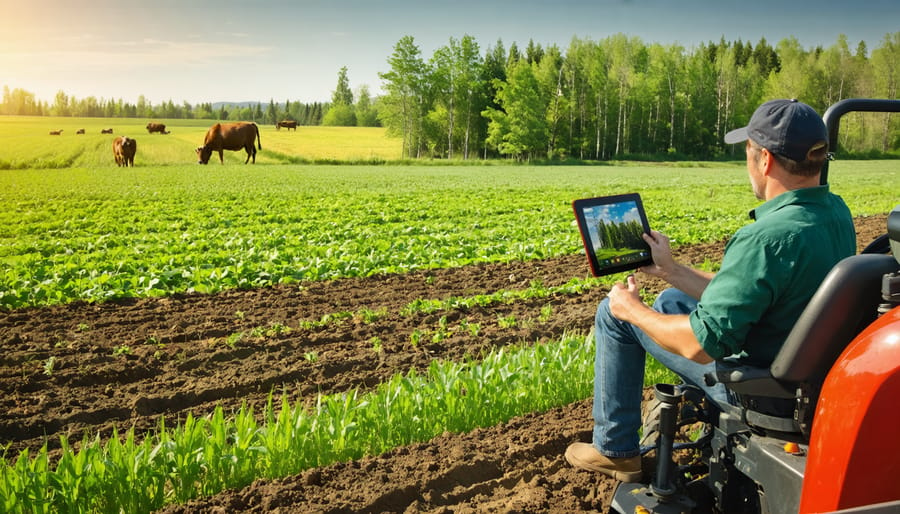Discover how carbon sequestration in agriculture can revolutionize the fight against climate change. By harnessing the power of soil, plants, and innovative farming practices, we can effectively remove carbon dioxide from the atmosphere and store it in the ground. This article explores the science behind carbon sequestration, its practical applications for Canadian farmers, particularly in Alberta, and the tremendous potential it holds for creating a more sustainable future. Join us as we delve into this game-changing approach to agriculture and learn how you can make a difference in your own farming operation.
Understanding Carbon Sequestration
The Carbon Cycle
The carbon cycle is a complex process that involves the exchange of carbon between the atmosphere, oceans, and land. In agriculture, plants play a crucial role in this cycle by absorbing carbon dioxide from the atmosphere through photosynthesis and storing it in their biomass and the soil. When plants die and decompose, some of this stored carbon is released back into the atmosphere, while some remains in the soil as organic matter. Agricultural practices can significantly influence the balance of this cycle, either by releasing more carbon into the atmosphere or by sequestering it in the soil. By adopting sustainable practices such as reduced tillage, cover cropping, and efficient nutrient management, farmers can help to mitigate climate change by reducing greenhouse gas emissions and increasing the amount of carbon stored in the soil. Understanding the carbon cycle and its relationship to agriculture is essential for developing effective carbon sequestration strategies.
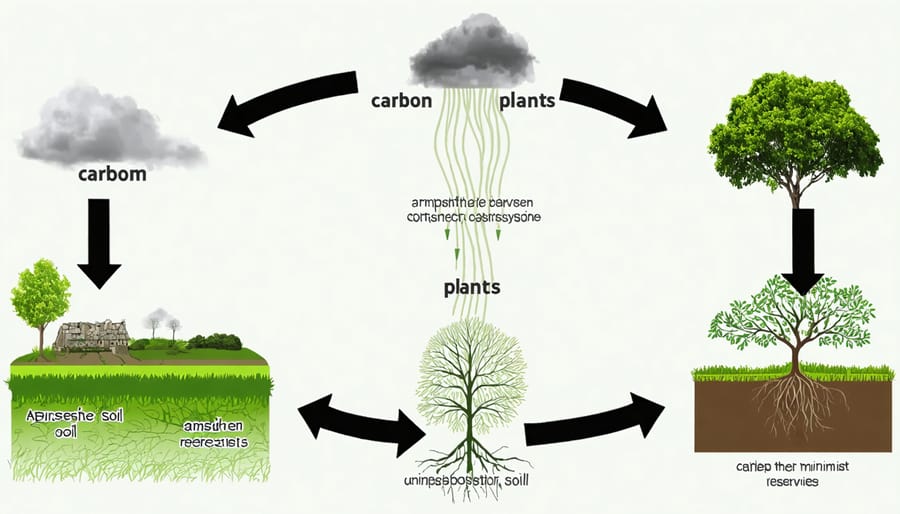
Soil as a Carbon Sink
Soil is a vital component in the carbon sequestration process, acting as a natural carbon sink. Agricultural soils have the potential to store vast amounts of carbon, helping to mitigate the effects of climate change. Through photosynthesis, plants absorb carbon dioxide from the atmosphere and store it in their biomass. As plant roots and residues decompose, a portion of this carbon is transferred to the soil, where it can remain for long periods.
Agricultural practices play a crucial role in enhancing soil carbon sequestration. Techniques such as reduced tillage, cover cropping, and crop rotation can increase soil organic matter, improve soil structure, and promote the accumulation of stable carbon compounds. By minimizing soil disturbance, reducing erosion, and increasing plant biomass, these practices create favorable conditions for carbon storage.
In the Alberta region, adopting these sustainable agricultural practices can have a significant impact on soil carbon sequestration. The province’s diverse landscapes, including grasslands, parklands, and boreal forests, offer unique opportunities for carbon storage. By implementing regenerative farming methods, Alberta farmers can not only contribute to climate change mitigation but also improve soil health, fertility, and overall agricultural productivity.
Moreover, soil carbon sequestration provides numerous co-benefits for farmers and the environment. Increased soil organic matter enhances water retention, nutrient cycling, and soil biodiversity, leading to more resilient agroecosystems. Healthier soils also require fewer inputs, such as fertilizers and pesticides, reducing costs and environmental impacts.
As Canadian farmers, particularly those in Alberta, embrace carbon sequestration practices, they become stewards of the land, contributing to a more sustainable future. By recognizing the value of soil as a carbon sink and adopting regenerative agricultural practices, farmers can play a vital role in combating climate change while ensuring the long-term productivity and viability of their operations.
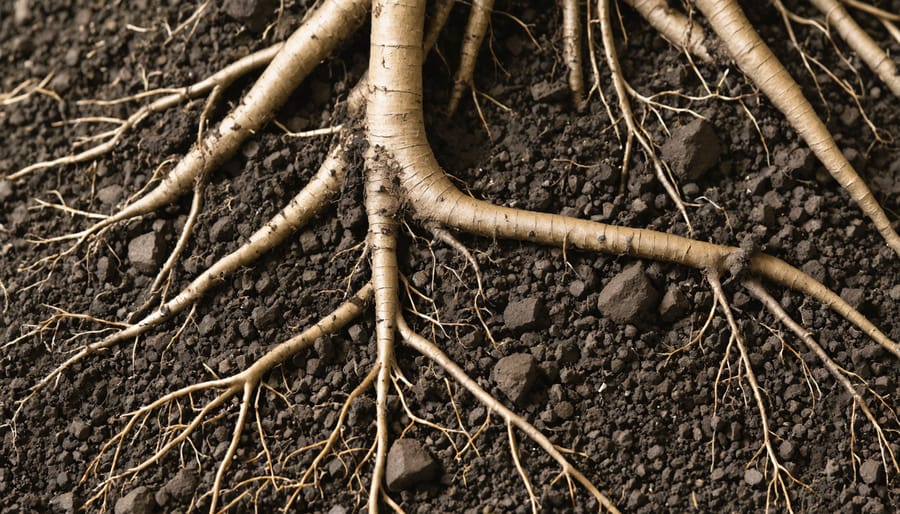
Carbon Sequestration Practices in Agriculture
Conservation Tillage
Conservation tillage, a farming method that minimizes soil disturbance, plays a vital role in carbon sequestration in agriculture. By reducing or eliminating tillage, farmers can maintain crop residue on the soil surface, which decomposes slowly and adds organic matter to the soil. This process increases the soil’s carbon content and improves its structure, water retention, and fertility. In Alberta, conservation tillage practices such as no-till and strip-till have gained popularity among farmers looking to enhance soil health and reduce their carbon footprint. These methods involve planting crops directly into the previous year’s crop residue without tilling the soil, minimizing soil disturbance and preserving the soil’s natural structure. By adopting conservation tillage, farmers can sequester more carbon in their soils, reduce greenhouse gas emissions from tillage operations, and improve the overall sustainability of their farming practices. As more Canadian farmers embrace these techniques, they contribute to the collective effort to mitigate climate change while promoting soil health and long-term agricultural productivity.
Cover Cropping
Cover cropping is a powerful tool for enhancing soil health and promoting carbon sequestration in agriculture. By planting cover crops between main crop rotations, farmers can protect the soil from erosion, suppress weeds, and improve nutrient cycling. As cover crops grow, they absorb atmospheric carbon dioxide through photosynthesis and store it in their biomass. When incorporated into the soil, this biomass decomposes, adding organic matter and sequestering carbon in the soil profile.
The benefits of cover cropping extend beyond carbon storage. Cover crops help to maintain soil moisture, reduce compaction, and improve soil structure, creating a more resilient growing environment for subsequent crops. Leguminous cover crops, such as clover and vetch, fix atmospheric nitrogen, reducing the need for synthetic fertilizers and further contributing to soil health.
In the Alberta region, cover cropping is gaining traction among forward-thinking farmers. By adapting cover crop species and management practices to local conditions, producers are witnessing firsthand the positive impacts on soil quality, crop yields, and overall farm sustainability. As more farmers adopt this practice, the collective potential for carbon sequestration and soil regeneration grows, contributing to a more resilient and climate-friendly agricultural landscape in Canada.
Agroforestry
Agroforestry, a land management approach that integrates trees with crops or livestock, offers a promising solution for carbon sequestration in agriculture. By strategically incorporating trees into farming systems, agroforestry practices can enhance carbon storage both above and below ground. Trees absorb carbon dioxide from the atmosphere through photosynthesis and store it in their biomass, including leaves, branches, trunks, and roots. Additionally, tree roots contribute to soil carbon sequestration by adding organic matter and improving soil structure.
In Canada, agroforestry practices such as shelterbelts, riparian buffers, and silvopasture systems have shown significant potential for carbon sequestration. Shelterbelts, rows of trees planted along field edges, not only provide wind protection and reduce soil erosion but also act as carbon sinks. Riparian buffers, consisting of trees and shrubs along waterways, help stabilize riverbanks, filter nutrients, and store carbon in their biomass and surrounding soil. Silvopasture systems, which combine trees with forage and livestock production, can increase carbon storage while providing shade and shelter for animals.
Agroforestry practices not only sequester carbon but also offer numerous co-benefits for farmers and the environment. These include improved soil health, enhanced biodiversity, increased crop yields, and diversified income streams through timber, fruit, or nut production. As Canadian farmers, particularly those in the Alberta region, adopt and expand agroforestry practices, they can contribute to mitigating climate change while building resilient and sustainable agricultural systems.
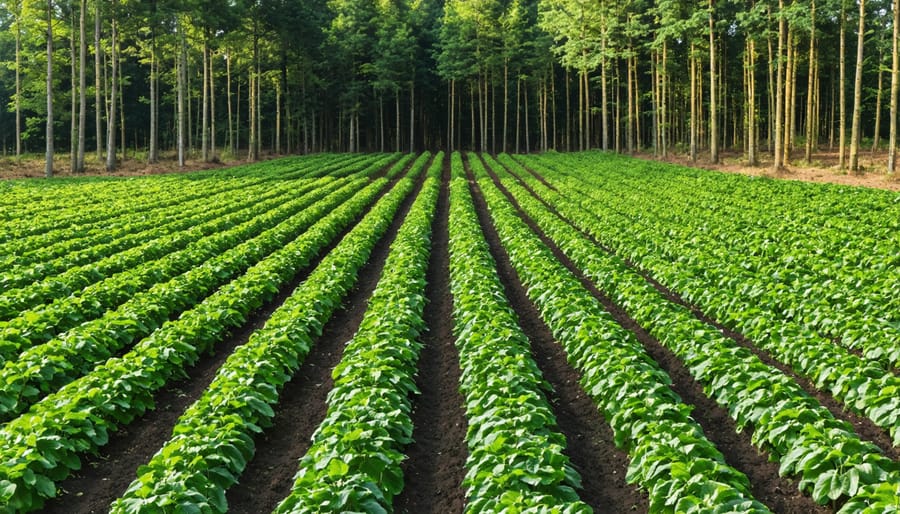
Benefits of Carbon Sequestration in Agriculture
Climate Change Mitigation
Carbon sequestration in agriculture plays a vital role in climate change mitigation by reducing greenhouse gas emissions. By implementing practices such as cover cropping, reduced tillage, and agroforestry, farmers can enhance the ability of their land to absorb and store carbon dioxide from the atmosphere. These practices not only help combat climate change but also improve soil health, increase biodiversity, and promote sustainable food production. As more farmers adopt carbon sequestration techniques, the agricultural sector can make a significant contribution to global efforts in reducing the impacts of climate change while ensuring a resilient and productive future for generations to come.
Improved Soil Health
Carbon sequestration practices, such as cover cropping, reduced tillage, and crop rotation, have a profound impact on soil health. By increasing soil organic matter, these techniques enhance soil structure, water retention capacity, and nutrient availability. Healthier soils support more robust root systems, leading to improved plant growth and productivity. Moreover, diverse microbial communities thrive in carbon-rich soils, contributing to nutrient cycling and disease suppression. As a result, farms implementing carbon sequestration practices often experience higher yields, reduced input costs, and greater resilience to environmental stresses. By prioritizing soil health, farmers can create a sustainable and productive agricultural system that benefits both the environment and their bottom line.
Economic Opportunities
Adopting carbon sequestration practices can offer farmers economic opportunities through carbon credit programs. By implementing practices that store carbon in the soil, farmers may be eligible to earn carbon credits, which can then be sold in carbon markets. This creates an additional revenue stream for farmers while incentivizing sustainable agriculture practices. Carbon credit programs, such as those offered by Alberta’s Carbon Offset System, provide a framework for quantifying, verifying, and trading carbon credits. As global efforts to combat climate change intensify, the demand for carbon credits is expected to rise, potentially increasing their value for participating farmers.
Conclusion
Carbon sequestration in agriculture is a vital tool for mitigating climate change while improving soil health and crop productivity. By adopting practices like no-till farming, cover cropping, and agroforestry, Canadian farmers, especially those in Alberta, can play a significant role in reducing greenhouse gas emissions and enhancing the sustainability of their operations. These practices not only benefit the environment but also lead to better water retention, reduced erosion, and improved nutrient cycling in the soil.
As stewards of the land, it is crucial for farmers to embrace carbon sequestration techniques and contribute to the global effort against climate change. By working together as a community and sharing knowledge, Alberta’s agricultural sector can become a leader in sustainable farming practices. We encourage readers to explore the resources provided by local agricultural organizations and government agencies to learn more about implementing carbon sequestration strategies on their farms. Together, we can build a more resilient and sustainable future for Canadian agriculture.

